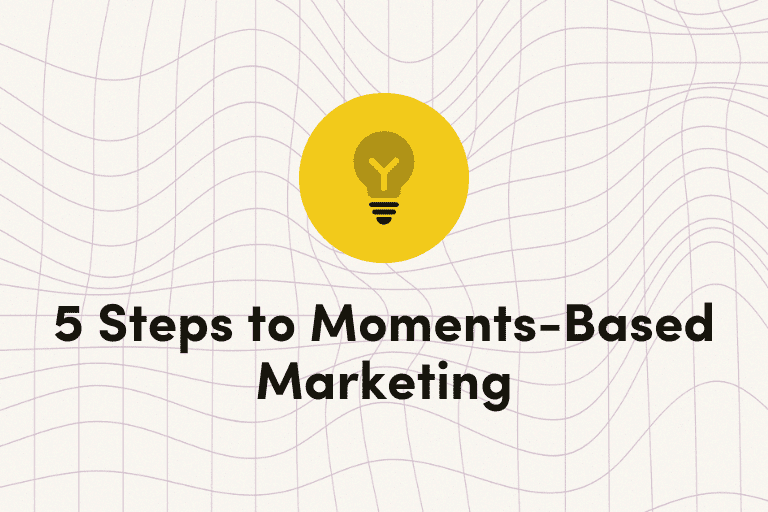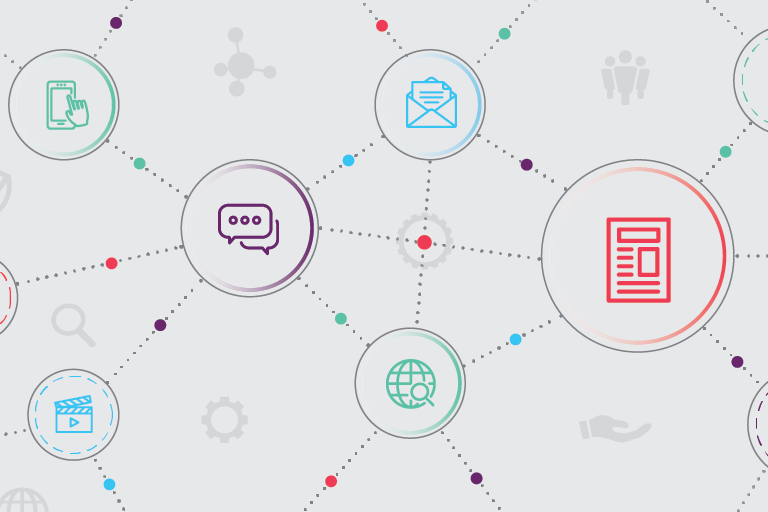Big buzzwords can be tossed around willy-nilly in the marketing world. This happens so often, in fact, that they can lose all meaning. Sometimes they can turn into phrases where you aren’t entirely sure what is being said. One of these phrases is “marketing channel strategy.” We’ve all probably heard it or even said it ourselves, but has anyone really dissected it to better understand what it means?
The sparkly, flashy term “marketing channel strategy” can mean different things to different people. So to clarify, we want to do an in-depth analysis of what a marketing channel strategy is, what it looks like, and why it matters for your brand. Let’s get right into it.
Things to Consider for Your Marketing Channel Strategy
Put simply, your marketing channel strategy is how you go about optimizing the use of different marketing channels for your business. Maybe you use email, SMS, and push. Your channel strategy is making the most of each of these individually and together.
But that’s not as simple as it might sound. Here are some things to consider as you get started.
- What channels does your business use? Think: SMS, email, push notifications, web in-app, etc.
- What content fits each channel’s use? Not all content works across channels.Some require shorter messages. Others might excel in certain types of content—see: SMS for transactional messaging.
- What context fits each channel? The situations in which you send an SMS versus when you send an email can differ greatly. So, a marketing channel strategy goes beyond just determining the messages that are sent, but also takes into consideration the context in which you send them.
- How often do you send messages per channel? With context comes cadence. Consider how many messages you’re going to send per channel to improve the overall experience.
- Where do your customers engage? Based on how customers interact with your messages, you can collect engagement info and alter your journeys (in real-time).
Each of these considerations plays a role in determining your optimal marketing channel strategy. This isn’t even considering the fact that all of this should be individualized.
You know good marketing when you see it. So let’s take a look at some examples.
How Marketing Channels are Used
When the message type matches how the channel is used, so that it feels natural and non-disruptive to the customer, you’ve likely implemented a successful marketing channel strategy. Here’s how some brands are making the most of their channel strategies.
Optimized SMS
Take SMS for example. SMS messages are often used for urgent communications. So, if you’re looking to update customers on an order or a recent transaction (and they’ve opted in to receive text messages), you may want to send a text.
Grubhub, the food delivery service, uses SMS to send messages relevant to ongoing orders. The delivery drivers can communicate with customers to provide real-time updates, ensuring that the customer gets the information they need, as soon as possible.
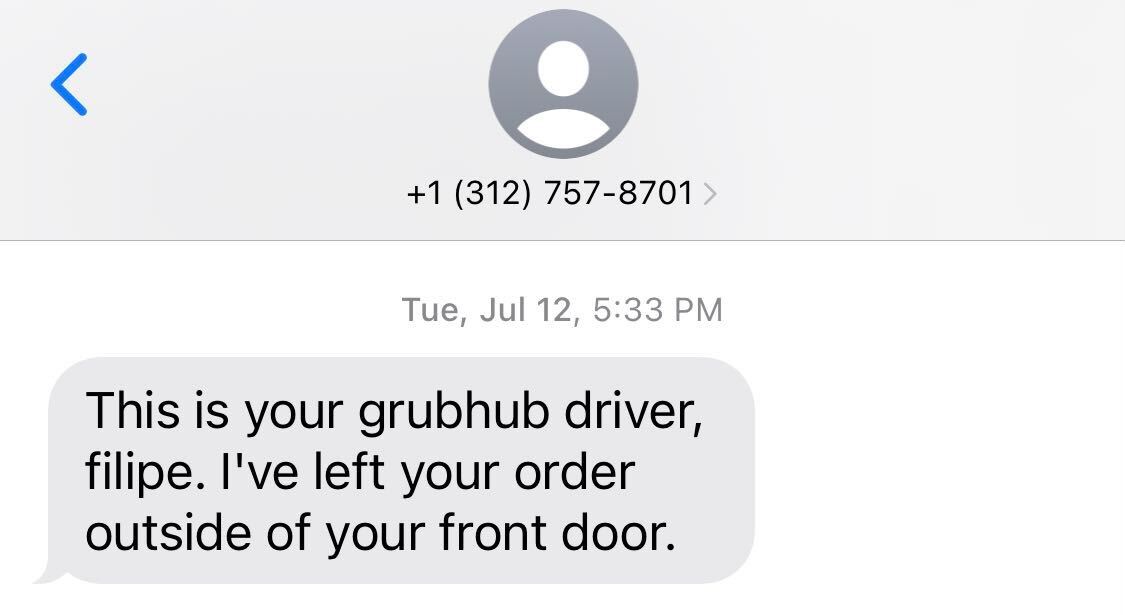

Grubhub drivers use SMS to keep customers informed while their orders are in the works.
When a delivery is on the way, it’s important that customers get up-to-date information in real time. Yes, an email saying the order was confirmed, etc., is helpful too, but for immediate information sharing, SMS makes the most sense. Using marketing channels how they are natively, intuitively used in daily life can help reduce friction for the customer.
Optimized Email
Like we mentioned in the Grubhub example, email can be really helpful for long-term order information or promotional content. For one, email is easily searchable. SMS is searchable to an extent, but it’s much easier to search through emails. Customers can quickly scan their inboxes for order information, coupons, etc.
Luggage company, Béis, sends a transactional email after a purchase is made. The email has the order information and a link to view the order. This type of message is perfect for email because it helps the customer keep tabs on their order. Now, if they want to view their order, they can search “Beis” in their inbox and find what they’re looking for.
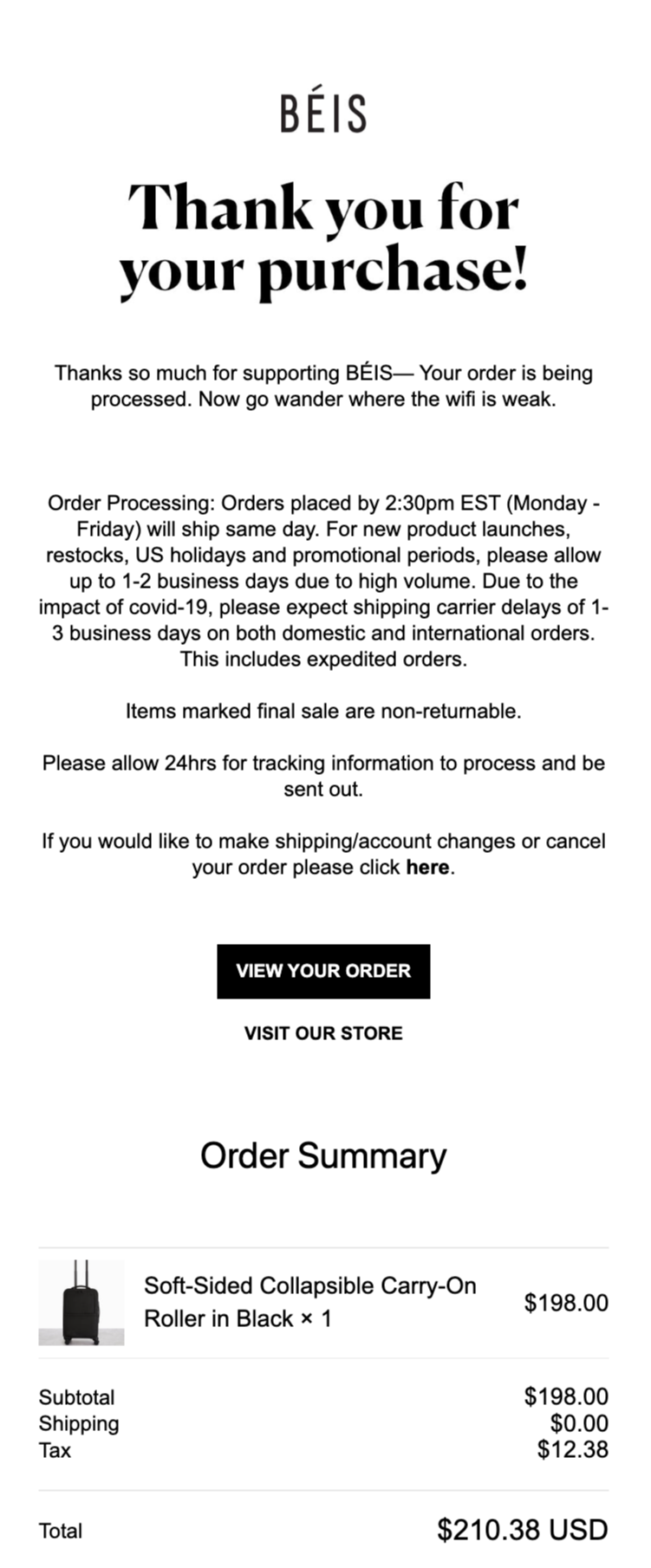

Béis chooses to use email as the channel through which to send transactional messages.
Beis does use SMS as a marketing channel, but chooses to use email as the channel for sending transactional messages. Like we mentioned, SMS isn’t as easy to search and, if the brand’s contact information isn’t saved in the user’s phone, it could be nearly impossible to find the message again. But, Béis could opt to use both channels, cohesively, to ensure the user has their order info.
Optimized Push Notifications
Push notifications can be a great channel to guide customers back to your mobile app. Because push notifications are tied to applications, plus customers have to opt-in to receive push notifications, you can almost guarantee that the customer is, on some level, actively engaging with your brand.
Wayfair, the online furniture retailer, uses rich push notifications and deep linking in an abandoned cart campaign. First, they send a push notification featuring the item left behind. Not only does the push notification have the item, it has the customer’s name as well. Then, when pushed, the notification expands to show the full image. Lastly, when clicked, the notification takes the customer directly to their cart within the mobile app.
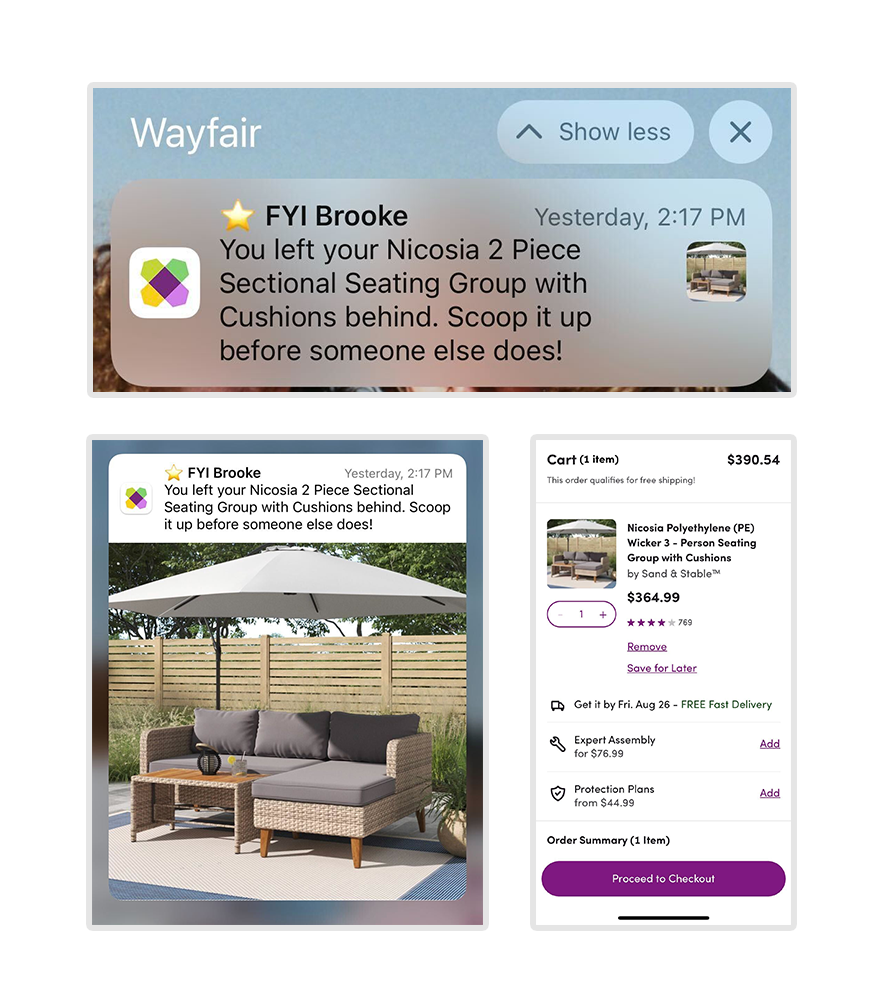

Wayfair uses personalization and push notification features to get customers back into the buying process.
This is an example of an optimized push notification action because it makes the customer experience extremely easy. On top of the eye-catching individualization, the deep linking removes any hurdles the customer may have as they go to purchase the item. To take this customer experience even further, other channels can be added to the mix.
Cross-Channel Marketing Strategies
Adding multiple channels that interact with one another and recognize the customer, regardless of which path they choose, creates a fully optimized cross-channel experience. Let’s take another look at Wayfair’s abandoned cart campaign.
Wayfair actually goes above and beyond when it comes to these campaigns. Not only do they use push notifications to lead customers to their mobile cart, but they use email as well. Here’s the kicker: when customers click on the abandoned cart email on their phone, they’re taken to the mobile app. When they click on the same email from their desktop, they’re taken to the website.
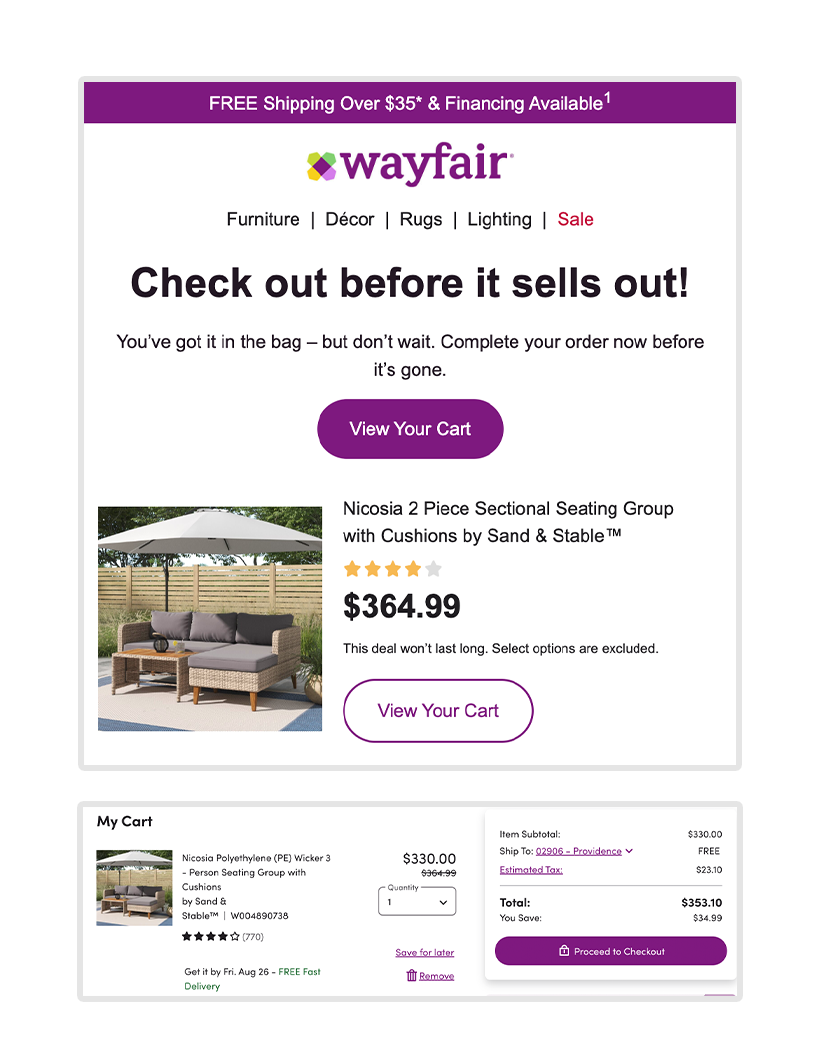

Wayfair takes into consideration which channel the customer is using to view their cart.
These seemingly small changes can create consistency and cohesiveness in the customer experience. Imagine if the customer clicked on the mobile email and it opened a mobile browser. It could be slightly disorienting and frustrating to the customer, considering they had just been using the mobile app.
A marketing channel strategy can apply to more than just transactional messages. Channel strategies can be optimized across a variety of different content types—promotions, newsletters, educational content, etc. Consider the type of content and how it works with the channels you’re using. For example, maybe a newsletter is sent via email instead of SMS, but order confirmations are sent via SMS. It’s all about what makes sense for the customer journey.
The devil is in the details and, when creating marketing channel strategies—both individually and cross-channel—these small details make a huge difference.
To learn more about how Iterable can help with your cross-channel marketing strategy, schedule a demo today.
